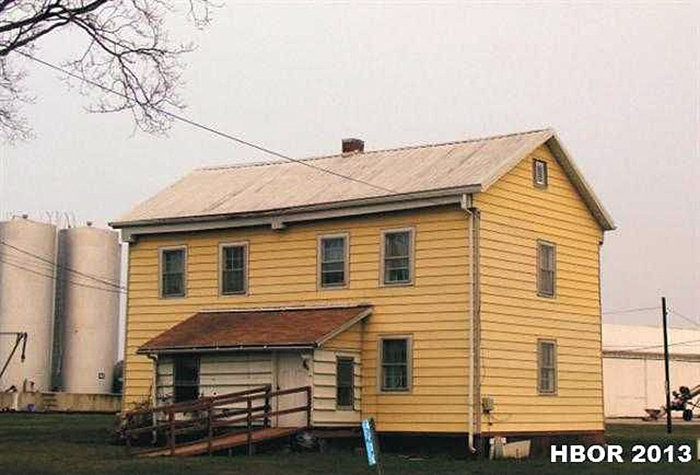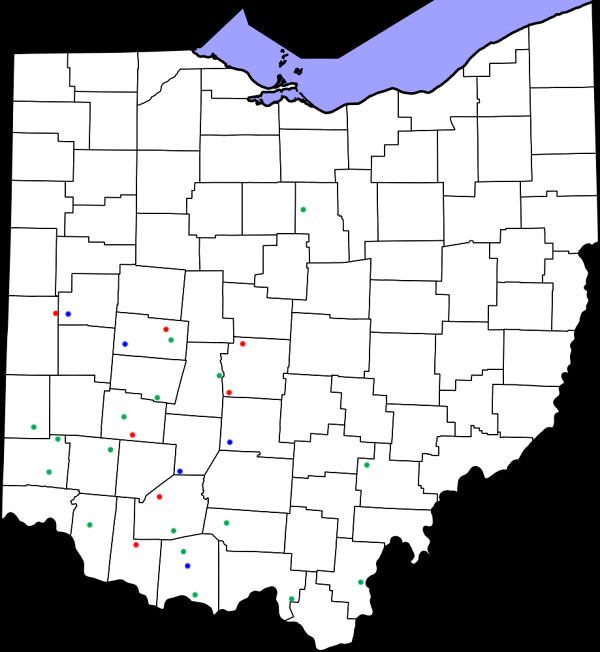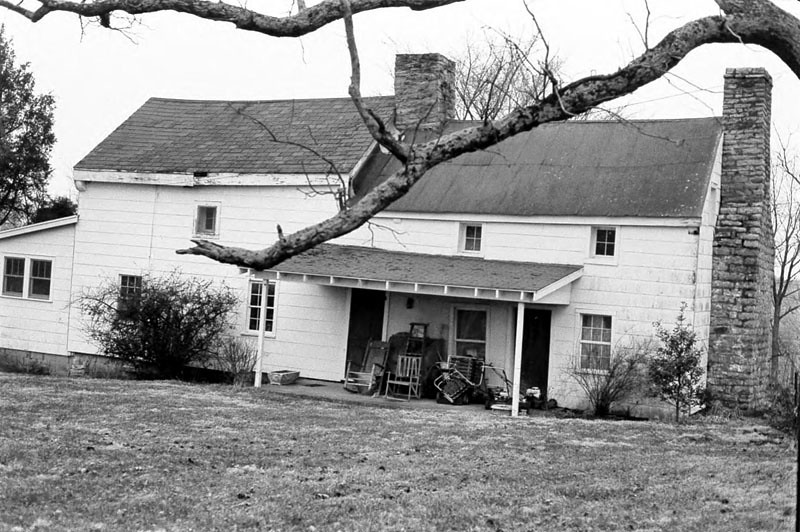Scattered throughout the southwestern portion of Ohio are examples of a peculiar type of eave construction, in which the plates (the uppermost logs of a non-gabled elevation), supported by extended side wall logs, overhang the walls themselves. This configuration is not easily sided and is thus a diagnostic characteristic of log architecture; even a remodeled building is easily identifiable, provided it features overhanging plates.
The technique's origin remains unknown. I've identified examples in Indiana, Kentucky, Missouri, and Ohio; of these states, Kentucky contains the greatest number by far (in fact, the overhanging plate seems dominant in the state).
In most cases, the plate itself is hardly noticeable. What lends distinction to this construction type is the supporting side log, which punctures the wall plane. Often, the ends of such logs are rounded or chamfered.
The technique's origin remains unknown. I've identified examples in Indiana, Kentucky, Missouri, and Ohio; of these states, Kentucky contains the greatest number by far (in fact, the overhanging plate seems dominant in the state).
 |
| Diagram, showing a simplified overhanging plate eave. Ignore my amateurish steeple notching! |
In most cases, the plate itself is hardly noticeable. What lends distinction to this construction type is the supporting side log, which punctures the wall plane. Often, the ends of such logs are rounded or chamfered.
 |
| Log house, Jefferson Township, Logan County, Ohio. Photo from the Logan County Auditor's website, 2012. In its proportions, a late 19th century building; the overhanging plates suggest otherwise. |
The overhanging plate also appeared in French-settled portions of Darke and Shelby counties. These houses, though typologically distinct from southwestern Ohio buildings, use similar eave construction.
 |
| Log house, New Riegel, Seneca County, Ohio. Photo from Zillow. Quite a fascinating structure, clearly divided by a full-height crosswall. In form, it resembles the French homes of Darke and Shelby counties; a few French individuals settled in Big Spring Township (in which New Riegel is located), so a connection between the regions is feasible. |






No comments:
Post a Comment